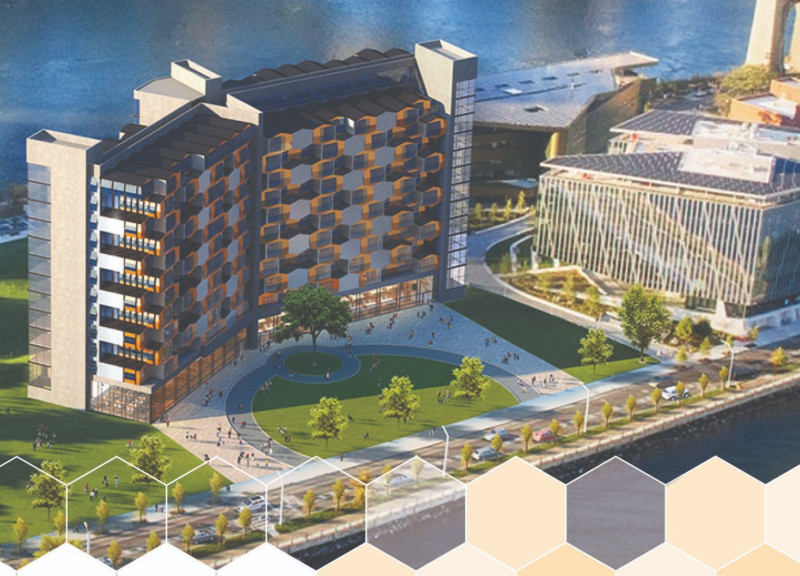5 key facts about this project
The Uni-Module project embodies a modern architectural design that prioritizes sustainability and adaptability. This modular dwelling system utilizes a hexagonal configuration, optimizing space and materials for enhancing residential living. The project's primary intent is to meet diverse housing needs across different environments—be it urban or rural—while maintaining aesthetic appeal and functionality.
The structure consists of several key components: Hex Rings serve as the main structural elements; Concrete in Place (CIP) is used for the floors; Metal Decking provides reinforcement; Aluminum Panels serve as cladding, while Dark Glass is integrated into the façades. The Sustainability Plant, vital for self-sufficiency, includes essential infrastructure for water management and waste processing. This comprehensive design approach ensures that each Uni-Module can operate independently, minimizing its ecological footprint.
Efficient Adaptability in Design
Uni-Module’s unique feature is its modular nature, allowing the configuration of units to be adjusted based on user requirements. Whether horizontal or vertical stacking, the hexagonal shape and variable dimensions facilitate personalization. Each module features a height of 12 feet with lengths ranging from 16 to 30 feet. This design can create single-family homes or multi-unit systems with ease.
The transportation of these units is streamlined by their modular design, enabling quick assembly or disassembly. This structural versatility caters to a broad demographic, allowing more widespread use in varied locations while mitigating construction waste. The project not only addresses housing shortages but does so with responsiveness to the specific contexts of different settings.
A Strong Emphasis on Sustainability
The integration of sustainable practices is a hallmark of the Uni-Module project. Each module is equipped with systems for energy efficiency and resource management, illustrating a commitment to ecological viability. Materials such as lightweight aluminum and durable concrete not only enhance structural stability but also reduce environmental impact. The utilization of dark glass panels provides natural light without compromising privacy—a thoughtful balance between openness and security.
Water conservation is addressed within each unit through dedicated systems, promoting a holistic approach to environmental responsibility. This self-sufficient design model not only lends itself to reduced dependency on urban infrastructure but also supports users in maintaining sustainable living practices.
For a comprehensive understanding of the Uni-Module project, interested readers are encouraged to explore its architectural plans, sections, designs, and ideas. This will provide deeper insights into its functionality and design approach, revealing the practical implications of its innovative architecture.






















































